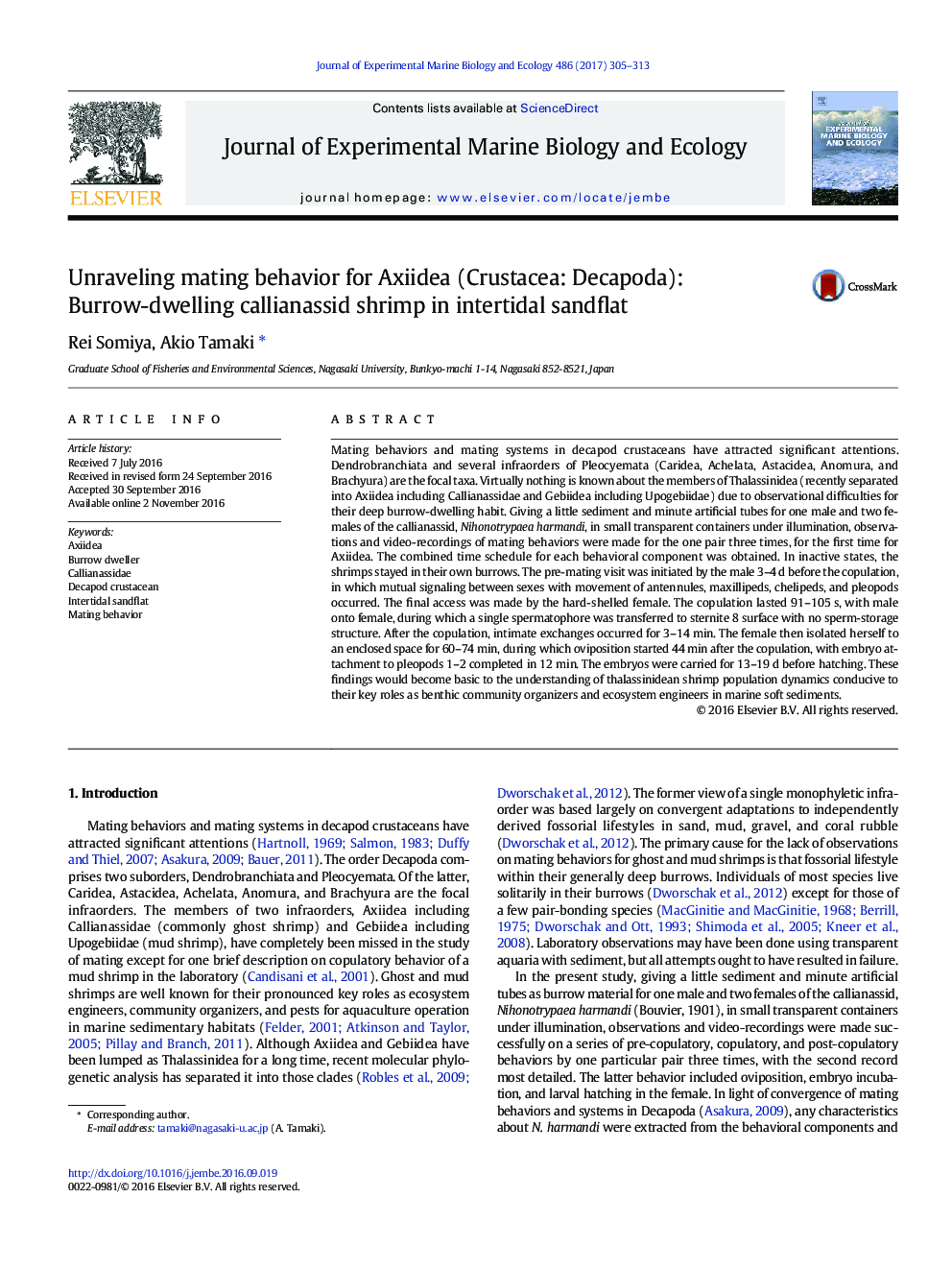| کد مقاله | کد نشریه | سال انتشار | مقاله انگلیسی | نسخه تمام متن |
|---|---|---|---|---|
| 8849049 | 1618389 | 2017 | 9 صفحه PDF | دانلود رایگان |
عنوان انگلیسی مقاله ISI
Unraveling mating behavior for Axiidea (Crustacea: Decapoda): Burrow-dwelling callianassid shrimp in intertidal sandflat
دانلود مقاله + سفارش ترجمه
دانلود مقاله ISI انگلیسی
رایگان برای ایرانیان
کلمات کلیدی
موضوعات مرتبط
علوم زیستی و بیوفناوری
علوم کشاورزی و بیولوژیک
علوم آبزیان
پیش نمایش صفحه اول مقاله

چکیده انگلیسی
Mating behaviors and mating systems in decapod crustaceans have attracted significant attentions. Dendrobranchiata and several infraorders of Pleocyemata (Caridea, Achelata, Astacidea, Anomura, and Brachyura) are the focal taxa. Virtually nothing is known about the members of Thalassinidea (recently separated into Axiidea including Callianassidae and Gebiidea including Upogebiidae) due to observational difficulties for their deep burrow-dwelling habit. Giving a little sediment and minute artificial tubes for one male and two females of the callianassid, Nihonotrypaea harmandi, in small transparent containers under illumination, observations and video-recordings of mating behaviors were made for the one pair three times, for the first time for Axiidea. The combined time schedule for each behavioral component was obtained. In inactive states, the shrimps stayed in their own burrows. The pre-mating visit was initiated by the male 3-4Â d before the copulation, in which mutual signaling between sexes with movement of antennules, maxillipeds, chelipeds, and pleopods occurred. The final access was made by the hard-shelled female. The copulation lasted 91-105Â s, with male onto female, during which a single spermatophore was transferred to sternite 8 surface with no sperm-storage structure. After the copulation, intimate exchanges occurred for 3-14Â min. The female then isolated herself to an enclosed space for 60-74Â min, during which oviposition started 44Â min after the copulation, with embryo attachment to pleopods 1-2 completed in 12Â min. The embryos were carried for 13-19Â d before hatching. These findings would become basic to the understanding of thalassinidean shrimp population dynamics conducive to their key roles as benthic community organizers and ecosystem engineers in marine soft sediments.
ناشر
Database: Elsevier - ScienceDirect (ساینس دایرکت)
Journal: Journal of Experimental Marine Biology and Ecology - Volume 486, January 2017, Pages 305-313
Journal: Journal of Experimental Marine Biology and Ecology - Volume 486, January 2017, Pages 305-313
نویسندگان
Rei Somiya, Akio Tamaki,